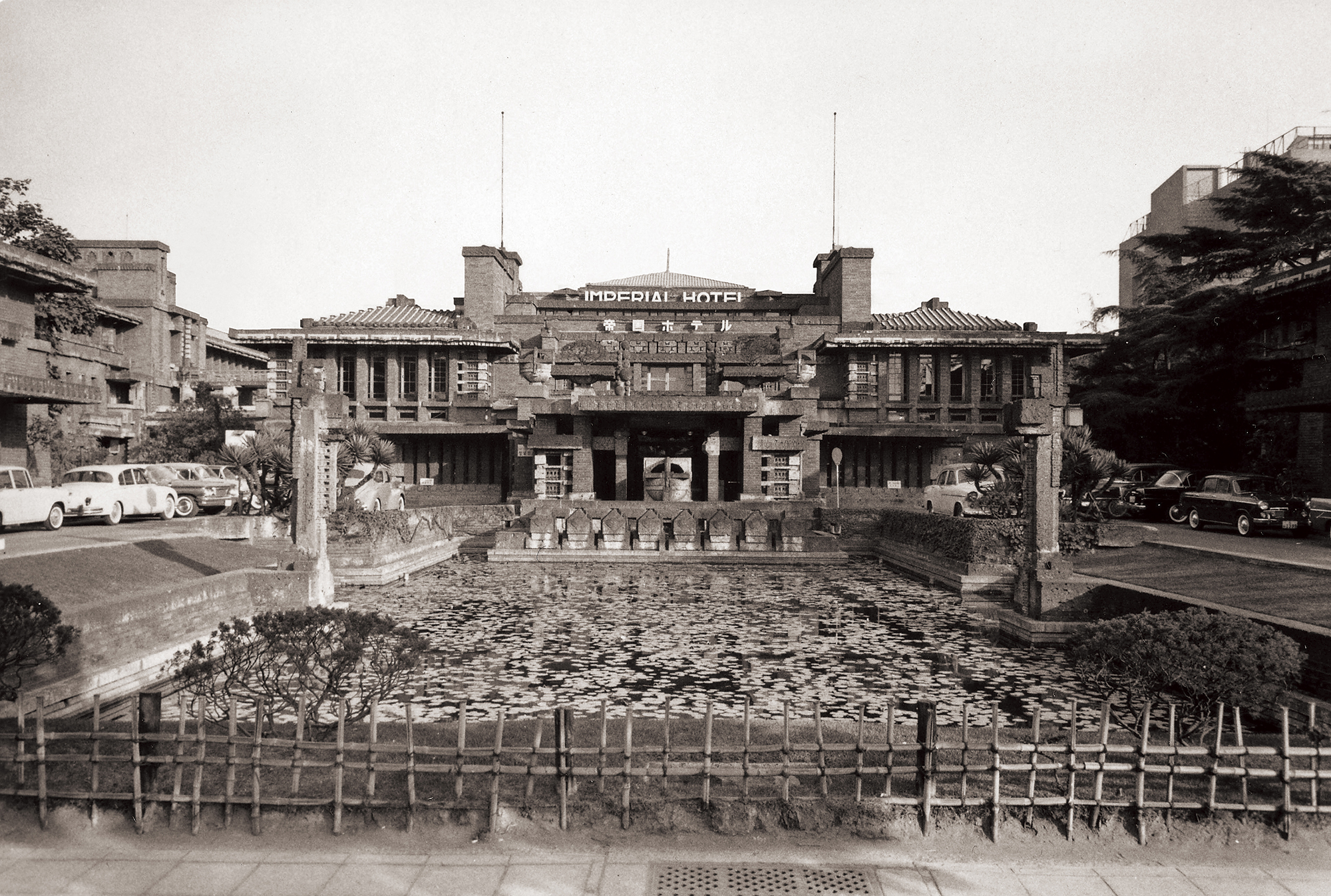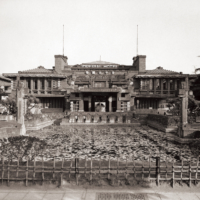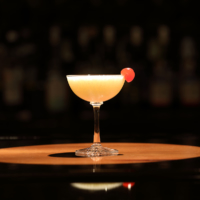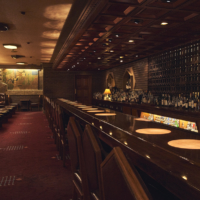A rich tapestry of culture, creativity and cocktails marks Frank Lloyd Wright’s legacy at the Imperial Hotel in Tokyo, an iconic institution that cemented the city’s reputation as a global destination. A century later, his subtle union of styles and careful intricacy lives on, paving the way to a radiant future for the “Made in Japan” hotel over the next century or two.
Inspired by Japan’s mastery of structural beauty, organic form and natural connection, Wright’s version of the Imperial Hotel has become an international architectural legacy. Just south of the Imperial Palace grounds, overlooking Hibiya Park, the hotel used a rich harmony of styles to serve Western visitors with Japanese hospitality. The hotel’s reputation precedes it, but many of those who step through its doors today are unaware of the transformations it underwent over the past century.
Drawn in by the traditional ukiyo-e prints he long admired and collected, Wright’s romance with Japan developed into what was arguably one of his most personal and intricate designs.
On his first trip to Japan in 1905, however, he found the country was not quite what he had imagined from the “old Japan” depicted in the prints. With industrialization and development growing, Japan was welcoming increasing numbers of Western visitors and was keen to provide their home comforts. One way of doing this was by building the Imperial Hotel, which opened in 1890 and was serving as the government’s semi-official state guesthouse. But the original wooden structure designed by Yuzuru Watanabe was ripe for renewal.
Forward thinker Aisaku Hayashi became the general manager in 1909, and change was afoot for the now aging Imperial. As well as introducing new guest services and leading with the renovation of the rapidly deteriorating structure, he envisioned a grand hotel that would serve as a hub of social activity, rivaling the prestige establishments in the West. Having been an art dealer in New York prior to his foray into hotel management, Hayashi tapped his trading connections to enlist the perfect architect for the project: Frank Lloyd Wright.
Faced with growing personal difficulties at home and enamored by his initial travels, Wright arrived in 1913 to begin preliminary drawings. He eventually drew up over 700 sketches while trying to perfect his concept for the haven of cultural exchange he envisioned before building began in 1919. Wright was particularly focused on the Japanese aesthetic of blending beauty and practicality, as well as Japan’s appreciation of natural simplicity, which he so admired.
While the project’s popularity waned due to rising costs and delayed finish dates, the remodeled hotel’s reputation was resurrected when it survived the devastating Great Kanto Earthquake on Sept. 1, 1923. Despite opening on the day of the quake, it emerged with only light damage, thanks to Wright’s ingenious “floating foundations.” Unfortunately, over time, these same foundations resulted in subsidence, with some portions of the hotel sinking deeper underground. The increasing influx of visitors facilitated by mass transit was also pressuring the hotel to expand its capacity with modernized facilities. In 1968, however, it was dismantled, and rather than letting it disappear into design history, the Meiji-Mura open-air architectural museum in Aichi Prefecture chose to take on the challenge of its preservation. Although the entire hotel could not be saved, the front entrance was painstakingly rebuilt and took over eight years to complete due to its incredible intricacy.
From its layout to the dinnerware, Wright designed every aspect of the second-generation Imperial Hotel. Also known as the Wright Building (Raito Kan in Japanese), it combined Mayan revival and art deco styling to provide a striking entrance for the brand-new hotel. Guest wings extended on both sides, creating a palatial complex fronted with a courtyard and reflection pool that linked the hotel to verdant Hibiya Park across the street. In a nod to Wright’s love of water in Japanese gardens, the pool’s surface drew the bold lines of the surrounding building eternally, elongating his creation and heightening the visual impact.
While his architectural forms were symmetrical at first sight, with clear lines and a heavy influence from his study of Japanese structure, the coalescence with nature is ever present. The pool was home to water lilies while trees framed the courtyard, softening the hard lines as lawns stretched out in between. Seeking to make the hotel an element of the existing landscape, Wright built low, and allowed the gardens that inspired him on his first visit to live on in the modern sphere.
Stepping within, the seasons lingered as copper eaves cast shadows across surfaces depending on the time of day and year. Each aspect was carefully considered in Wright’s many drawings and compositions, reflecting his efforts to engage beauty and practicality throughout. Despite being in the center of the world’s biggest metropolis, the enveloping effect of the park allowed guests to withdraw from the bustling streets and embrace the nature Wright incorporated at every turn.
Crossing the bridge from Eastern design to Western, he moved away from wooden structures and chose concrete paired with Oya stone from Tochigi Prefecture, along with stylish bricks. Holding a gray-green hue, the lava stone was a soft and malleable choice for the carvers tasked with forming it into the hotel’s body. The bricks, however, were painstakingly hand-carved with vertical lines to create texture and decorative details on an everyday surface. Wright ordered four million yellow bricks that were produced especially by the hotel’s own brick factory in Aichi Prefecture, and transported by land and sea to the Hibiya site.
Wright’s influence can be seen in every element, with “pillars of light” inspired by Japanese lanterns and wooden door and window frames created to contrast with the stone. His desire for a concurrent world of East and West extended to the use of space as well. With arcades, banquet halls and a theater, he created a home for cultural exchange that extended beyond a mere hotel. Often called the “Jewel of the Orient,” the Imperial was recognized as a destination in itself, allowing visitors to experience Japan’s omotenashi (selfless hospitality) without feeling too far from home in their daily comforts.
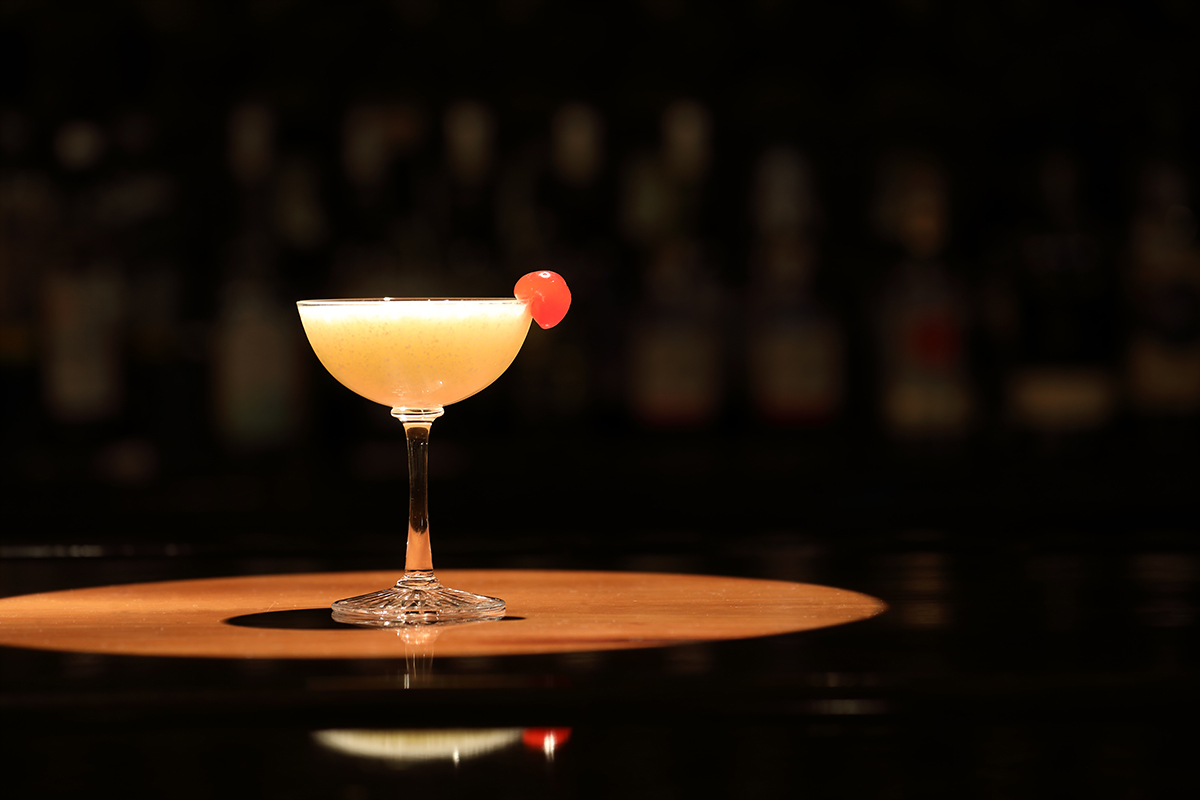
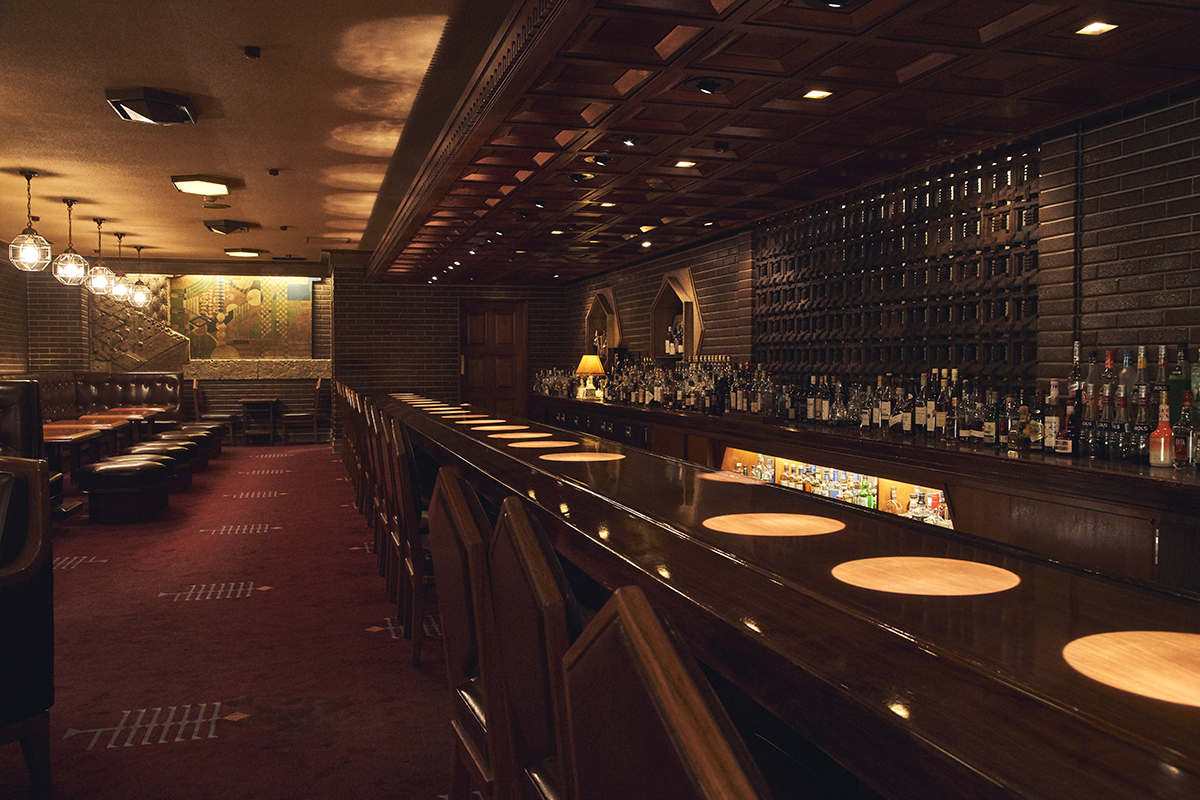
Today, visitors can observe the lasting heritage of Wright’s time while sipping cocktails in the Old Imperial Bar. Carrying the architectural legacy within the third-generation hotel, the main bar is an exclusive hideaway for world-class cocktails served by expertly trained staff. As drinks are poured, visitors can admire the original terracotta wall set behind the bar and the stone relief mural that once rested above the fireplace. In Wright’s vision, the fireplace, now gone, was a gathering point that drew crowds and sparked conversations long into the night. The striking space blends modern comforts with elements of art deco and Wright’s original architectural style, with lamps and furniture from the original hotel creating a warm ambiance as evening sets in.
With years of dedicated training, the bartenders have an encyclopedic knowledge of drinks, however there’s one that always comes recommended. The Mount Fuji was conceived as the welcome drink for passengers on a round-the-world cruise in 1924 and has remained a staple ever since.
Gin-based with a blend of egg white, lemon, pineapple juice and cream, it’s a smooth but vibrant combination that forms a subtle snowy peak when poured. Topped with a classic maraschino cherry to represent the rising sun, it’s a nod to Japan’s most iconic landmark, but also a fortuitous connection to Wright himself. Celebrating its 100th year, the Mount Fuji is the Imperial Hotel’s first original cocktail and a flavorful reminder of the glory of the Wright Building in its heyday.
As the world of contemporary hospitality evolves, the fourth imagining of the Imperial Hotel looms. Work is set to begin in summer and the tower building is undergoing a redesign, but the Old Imperial Bar remains cocooned in its Wright-infused bubble in the main building. It will continue to serve Mount Fujis in their classic form until 2031, when it, too, will be reformed, although Wright’s legacy is sure to live on for many decades to come.



